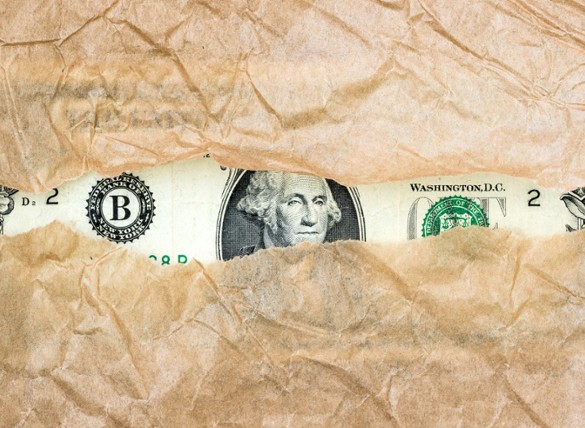In markets, money is energy — and flow, not form, drives the cycle between fear and greed.
Q&A: Shifting U.S. Sustainability Priorities Resonate Globally
Key Takeaways
- While the new U.S. administration’s policies are creating uncertainty in sustainability issues, particularly for tax-reliant wind and solar, many sustainable business criteria remain unchanged, with companies benefiting from business models that provide cost savings and environmental benefits, irrespective of policy changes.
- U.S. protectionist policies have strained international cooperation on sustainability, with Europe now needing to balance sustainability investments with other pressing needs such as energy security and defence.
- Changing global spending patterns and priorities include a noticeable shift toward faster modular technologies and investments in electric grids, while national security concerns are influencing the focus on battery production in Europe.
Given what appears to be a seismic shift in global policy priorities as the new U.S. administration enters the global stage, we asked Portfolio Managers Benedict Buckley and Jean Yu whether and how sustainability priorities are changing, both in the U.S. and globally. How are companies adapting?
Sustainable Business Criteria Remain Unchanged
Ben Buckley: Companies are managing through a dizzying array of policy changes at the moment. April in particular was an extraordinarily consequential month for the global economy, and there is no question that some of the U.S.’s policy changes are de-emphasising sustainability issues. There are currently some policy overhangs in certain sectors such as wind and solar, for example, where in the near term we are awaiting clarity on the fate of tax incentives implemented in the Inflation Reduction Act of 2022. These overhangs create some uncertainty for a sector that has been quite reliant on policy given the early-stage nature of its businesses.
Taking a step back from macro uncertainty, there is no change to the approach we take to determining what a sustainable business is. We look for businesses that we can own through a variety of economic and political cycles, where there is a durable sustainability driver to the business that stems from its attractive value proposition to its customers and good unit economics. We do not depend on policy-driven success. For example, United Rentals is the largest construction equipment rental company in North America. It has one million pieces of equipment such as forklifts, excavators, and cranes, valued at roughly $20 billion, that it rents out to construction sites in order to build most types of buildings, although their exposure is predominantly outside of single-family homes. The investment thesis is based on expected investments in U.S. infrastructure, such as the grid and manufacturing facilities, which have long-term demand drivers.
From a sustainability perspective, not only is United Rentals enabling the building of infrastructure, which we think is inherently crucial to the U.N. Sustainable Development Goals, but its rental model is also an inherently more efficient way of doing that. The fleet is newer than those of companies that own their own equipment and utilisation is higher. The company calculates that you need almost half a million fewer pieces of equipment out in the field because of this rental model. Not only is a younger, better-maintained fleet more efficient, but its fleet also has a higher proportion of electric or hybrid-powered equipment (versus diesel powered, for example) — about 30% of its rental fleet is electric or hybrid, which is 5%-10% higher than privately owned equipment fleets. With these factors combined, United Rentals estimates that the use of its equipment avoids half a million tons of CO2 annually. On top of that, it runs software that helps customers manage their use more efficiently, reducing idling time and helping track emissions. So, it is a great example of a company with a durable secular growth tailwind from infrastructure that is tied to the sustainable development goals, operating it in a sustainable way via the rental equipment model, which has economic benefits for both customers and the environment.
Another example is Trane Technologies, which is active in applied commercial heating and cooling. A large building must be kept at just the right temperature for people and equipment to function properly — think of a data centre, for example. Large buildings are very energy intensive: 15% of all global greenhouse gas emissions are associated with heating and cooling buildings, which makes their maintenance a very consequential piece of the overall climate picture. Trane has some of the most efficient equipment in the industry, with payback periods on its new equipment attractively in the range of 2–5 years, so it is well-positioned to grow its business by reducing energy use and emissions. And there is no change to the outlook for the business due to changes to sustainability policy.
World’s Biggest Challenges Remain its Biggest Business Opportunities
Jean Yu: A change in U.S. sustainability priorities has shifted sustainability priorities internationally as well. Global collaboration is critical for sustainability, and it is certainly getting harder. The U.S.’s protectionist policies have eroded trust between countries. Trade barriers are rising, and the risk of geopolitical conflicts too is growing. Europe, for example, has long been the leader in investing in and advancing sustainability, but now the energy transition is facing a lot of new competition for capital. Europe must now balance investing in sustainability with other urgent needs: energy security, defence spending and closing the tech gap with the U.S. and China.
European governments and companies alike are moving from “decarbonise at all costs” to a more pragmatic approach. They must make trade-offs and balance sustainability with strategic competitiveness. For example, instead of just aiming to grow renewables, policymakers are focussing on investments that lower and stabilise energy prices while cutting emissions. Consideration of improving European competitiveness has also expanded the definition of clean energy to include nuclear power. Investing in electric grids has also become a top priority, as grids lower energy costs and cut emissions at the same time. This priority enhances the opportunities for utilities and industrial companies involved in grid modernisation.
Spending patterns are shifting too, from big, slow, global projects to faster modular technologies, and from massive offshore wind farms to rooftop solar panels. And of course, national security has moved up the agenda. With the goal of protecting its know-how and preserving its strategic independence, Europe is investing more in batteries, for example, even though China can offer cheaper supply.
Exhibit 1: Potential Growth of Battery Production in the EU (GWh)

Source: “The future of European competitiveness: Report by Mario Draghi,” European Commission, September 2024; IEA, 2024.
Yet the world’s biggest challenges remain its biggest business opportunities. Water, for example, is essential to life, but climate change, pollution and population growth are all putting our clean water supply at risk. We can invest in companies tackling this particular challenge. United Utilities, for example, is a U.K. water utility spending £2.4 billion to cut water leakage and fix drainage, which helps to protect public health through improving water quality. Another example is Fortune Brands Innovations, whose MOEN smart water meters prevent household water leaks and save water. Through the installations it has done so far, these water meters have already saved 257 billion gallons of water and reduced insurance claims from massive water leakage by 96%.
These are what we might call sustainability promoters: companies directly advancing sustainability with their products or services. There are other strong opportunities for sustainability enablers — companies whose products help others meet ESG goals — and reformers — companies improving from ESG laggards to leaders.
Among these last two are copper miners like Freeport-McMoRan and Teck Resources, as copper is essential to enabling electrification and decarbonisation.
Among reformers, there is PG&E, a utility company, which was one of the worst ESG stories. It was responsible for deadly wildfires in 2017 and 2018, and it filed for bankruptcy due to a major governance failure as well. Today, however, PG&E is a totally different and reformed company. Under outstanding new leadership, it has rebuilt trust by investing in safety, varying power lines, upgrading poles and wiring the grid with sensors that warn against fires. It has pivoted toward clean energy: today, PG&E already delivers 100% greenhouse-gas-free electricity to its retail customers.
Related Perspectives


